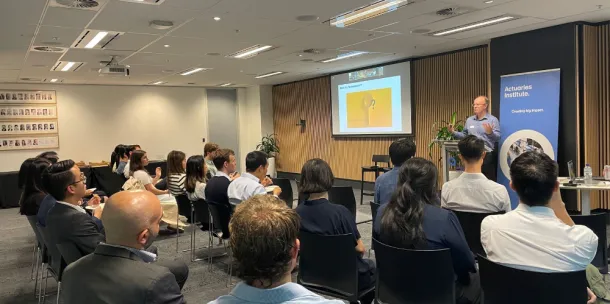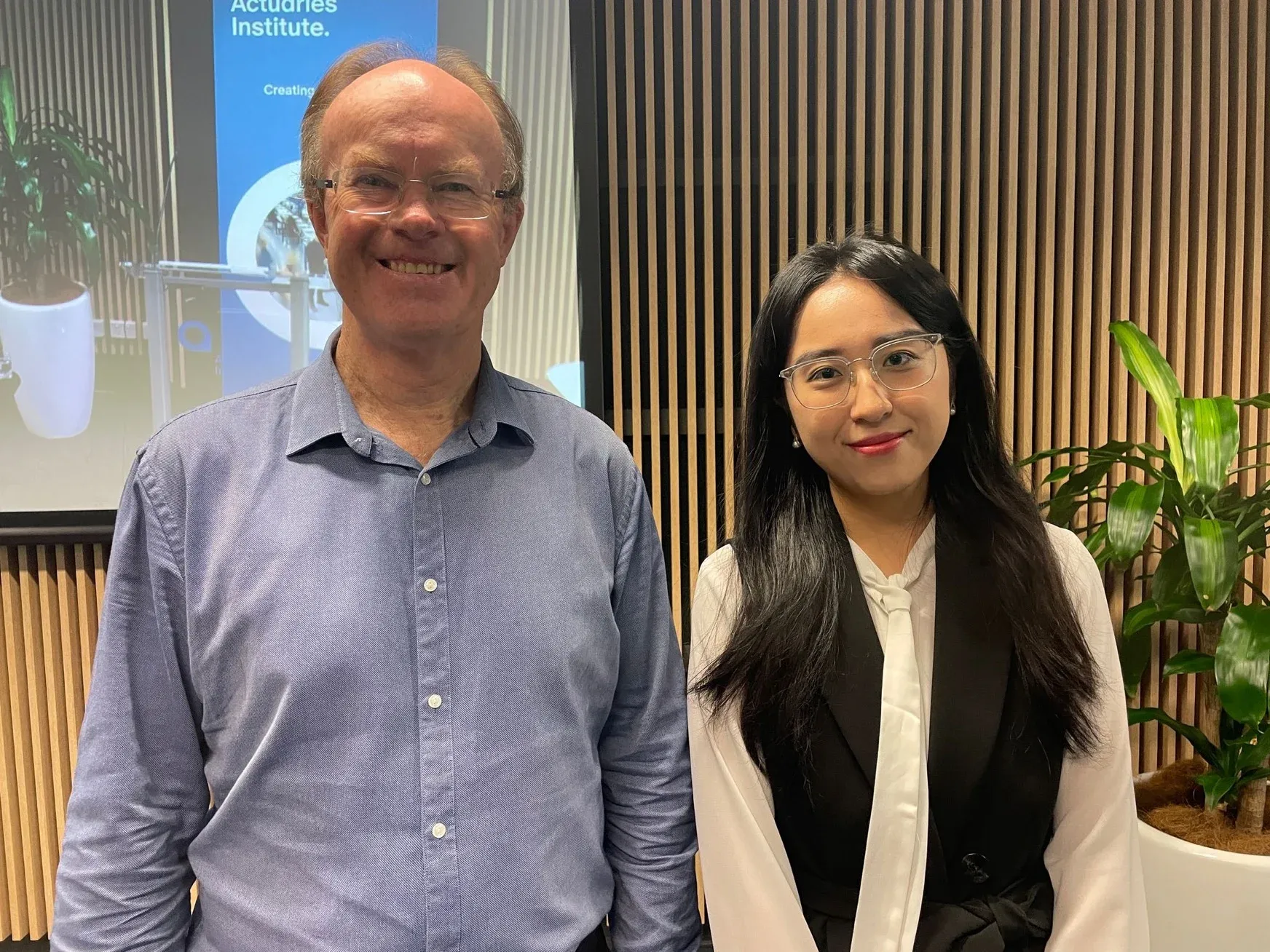Actuarial careers
Industry topics

Claim your CPD points
"Being able to confidently present is not something that you're just born with or not. It's actually a skill, and that's a skill that we can all develop."
These were the opening words of Julia Lessing for the second instalment of the YAP Career Series Mastering Presentation Skills, an Actuaries Institute initiative created to help young actuaries hone their skills.
For those who've watched a senior actuary command a boardroom while they themselves freeze up during team check-ins, this is a fact they know all too well. But, as presentation experts Martin Mulcare and Anita He made clear, presentation skills aren’t about charisma – they’re about having the right playbook.
Picture this: you've crafted the perfect presentation following clear actuarial logic, including background, methodology, analysis, results. It's beautifully rational. But it's also putting your audience to sleep.
Martin, who spent a decade teaching presentation skills, delivered the hard truth: "This is the classical way that actuaries think about flow but it’s unlikely to be compelling for your audience."
Martin suggests flipping your approach to your framework entirely with Barbara Minto's pyramid principle.
"We start with the scenario – the situation – then we think, ‘What is the complication?’ Then ask, ‘What is that key question arising from that scenario and that challenge?’ And then let's come up with an answer."
This principle is the difference between a march through methodology and a compelling story that gets decisions made.
When presenting to senior colleagues and clients, many young professionals have wondered how they could possibly be taken seriously. The instinct is often to put on a performance — to become more animated, more assertive, more like the confident speakers we admire. But the answer doesn’t lie in pretending to be someone else.
Martin's solution combines authentic presence with strategic moves:
"It's far more important that it's you on stage, authentic you, rather than being somebody else," Martin shares. The engagement toolkit is vast — visuals, quotes, stories, questions — but the magic happens when you choose techniques that feel natural.
"If you are by nature a little quiet, not particularly animated, then what are the ways that you will engage your audience? If it's not from that energy aspect, maybe relevance, maybe attitude, maybe you just need to smile a bit more, and that's enough."
When audience members shared their biggest concern – how to manage nerves, Martin advised, “If you're not nervous, you're not up for it. You clearly haven't thought enough about this. A little bit of adrenaline is good for us."
To combat nerves, Martin suggests a three-phase strategy:
Martin then invited Anita He to share insights on how artificial intelligence can now coach your presentations. Microsoft PowerPoint's "Rehearse with Coach" analyses speech patterns, pace, and filler words, and provides more objective feedback as it “removes personal biases and preferences compared to say human feedback,” Anita explained.
But Anita keeps it real about AI's limits. "AI driven feedback cannot replace humans entirely... because presentations can vary significantly by things like our purpose, our target audience, our messaging and the vibe that we want to achieve."

Presenters Martin Mulcare and Anita He.
Every presenter faces moments of disaster, but the pros are able to handle them with grace. Martin's solution? "My normal shorthand is, ‘Sorry about that, let me do that one more time’ and just go back to where I was."
And as host Julia Lessing shared, "A pause feels a lot longer to you than it does to your audience."
For young actuaries navigating a profession where technical brilliance must be communicated clearly, these skills separate those who stay in the background from those who drive change at the executive level. Your technical expertise deserves a voice that matches its brilliance. The tools are here, the pathway is proven. The only question left is whether you're ready to put them to work.
Want to dive deeper into these techniques? The full session recording with detailed examples is available here .

A photo of the Melbourne watch-party.
Presentation skills? Check. Now comes the real test: cutting through when it matters most. The YAP Career Series continues with Getting Your Voice Heard: Strong Mind, Strong Voice, Strong Career on Thursday, 31 July 2025.
Join us in Sydney or at watch parties across Australia for networking, pizza, and the insider strategies that turn technical experts into influential leaders. Register now .